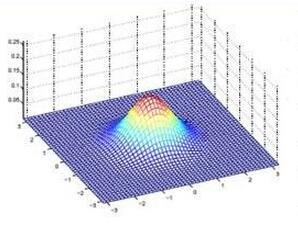Marginal maximum likelihood (MML) estimation is the preferred approach to fitting item response theory models in psychometrics due to the MML estimator's consistency, normality, and efficiency as the sample size tends to infinity. However, state-of-the-art MML estimation procedures such as the Metropolis-Hastings Robbins-Monro (MH-RM) algorithm as well as approximate MML estimation procedures such as variational inference (VI) are computationally time-consuming when the sample size and the number of latent factors are very large. In this work, we investigate a deep learning-based VI algorithm for exploratory item factor analysis (IFA) that is computationally fast even in large data sets with many latent factors. The proposed approach applies a deep artificial neural network model called an importance-weighted autoencoder (IWAE) for exploratory IFA. The IWAE approximates the MML estimator using an importance sampling technique wherein increasing the number of importance-weighted (IW) samples drawn during fitting improves the approximation, typically at the cost of decreased computational efficiency. We provide a real data application that recovers results aligning with psychological theory across random starts. Via simulation studies, we show that the IWAE yields more accurate estimates as either the sample size or the number of IW samples increases (although factor correlation and intercepts estimates exhibit some bias) and obtains similar results to MH-RM in less time. Our simulations also suggest that the proposed approach performs similarly to and is potentially faster than constrained joint maximum likelihood estimation, a fast procedure that is consistent when the sample size and the number of items simultaneously tend to infinity.
翻译:由于MML估测仪的连贯性、正常性和效率,在抽样规模趋向于无限性,因此在心理计量中安装项目反应理论模型(MML)是首选方法,因为MML估计值具有一致性、正常性和效率,但是,最先进的MML估计程序,如MMML测算法(MH-RM),以及MMML估计程序,如变速推算法(VI),在样本规模和潜在因素数量非常大时,在计算时,将项目反应理论模型(IFA)的深度基于学习的探索性项目系数分析(IFA)算法(IFA)计算得很快,在大数据集中,该方法的计算速度非常快,有许多潜伏因素。 高人工神经网络模型(IWAE)算法(IWA-RM)算法(IW)算法(IML)估算法(VI)的精确度和直径直径法(I)的测算法(I-Rimal-I)程序在精确度测算法中,我们进行精确测算法(I)的测算法(I)的测算法的测算法的精确测算法(I)的测算算法(I)的精确性结果在进行后,我们进行测算算算算算算算法的精确性结果的精确性结果的精确性是比。



